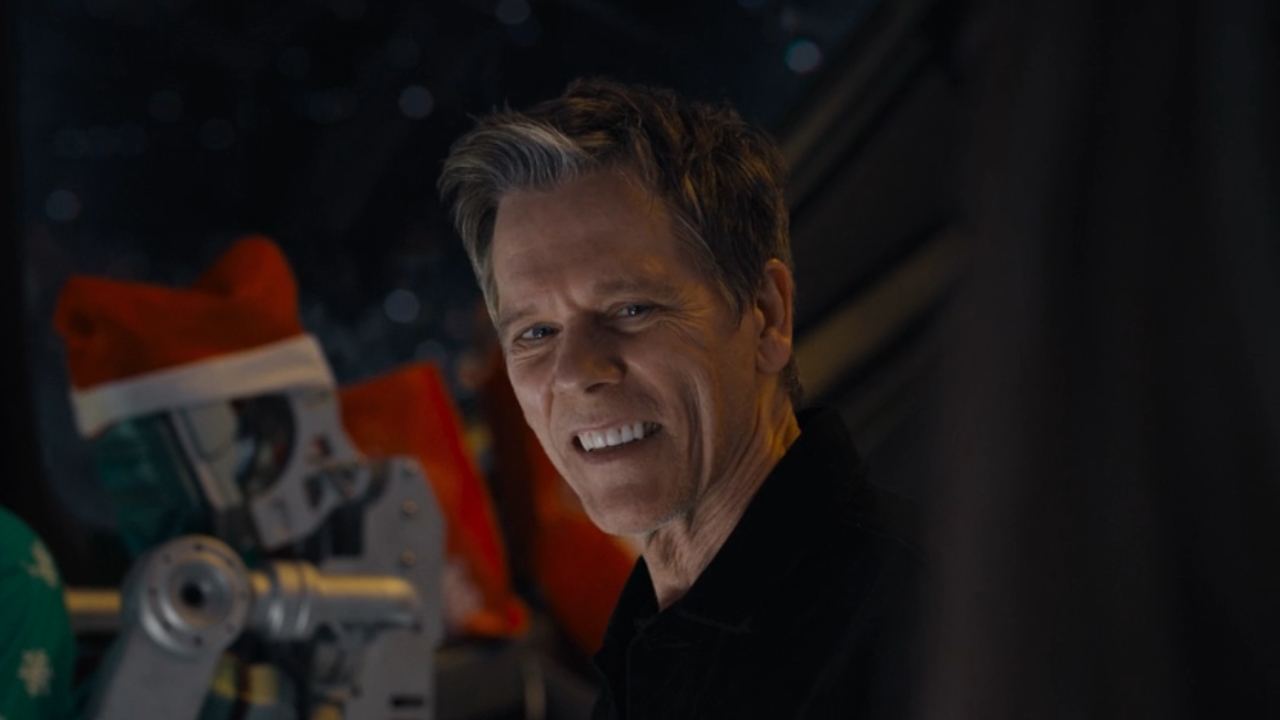Why It’s Wrong To Think The Invisible Man's Villain Is All In The Head Of Elisabeth Moss' Cecilia

SPOILER WARNING: The following article contains massive spoilers for The Invisible Man. If you have not yet seen the film, proceed at your own risk.
One of the most important conflicts in Leigh Whannell’s The Invisible Man is the relationship between Cecilia Kass and the outside world. The principal reason why Adrian Griffin’s gaslighting is so successful is because it’s chaos that Cecilia has to experience alone, as she’s unable to convince even those she’s closest to that her abusive ex-husband is stalking her in a suit that makes him invisible.
Gaslighting is defined as an abuse where a tormentor works to make their target question their perception of reality, and what makes The Invisible Man so powerful is that every step of the way you are experiencing events through Cecilia’s eyes and have a full understanding of both her legitimate terror and her fight to prove her sanity. As an extension of that, though, it is a complete misreading of the film to revitalize that classic chestnut of a query: was it all just in her head?
What transpires in The Invisible Man is most definitely not all just in Cecilia’s head, and to ask that question is missing one of the big points of the movie.
For starters, there is the practical side of things, and the concrete evidence presented in the film that clearly demonstrates that Cecilia’s “haunting” isn’t just a result of a series of hallucinations. Sure, there is some latitude to mistrust anything we directly see through the protagonist’s eyes, such as the foot imprints on the bedsheet in Sydney’s room, but Leigh Whannell also makes a point of showing Adrian’s actions outside of Cecilia’s eye line. Watching a knife fall off the counter and not hit the floor, and steamy breath produced from nowhere during a cold night are not just creepy moments, but nods to the fact that there really is an Invisible Man.
Then there’s the matter of audience expectation. The Invisible Man is the latest film to be made based on a character from the roster of Universal Classic Monsters, and that fact creates a kind of contract with the audience – basically a promise that there will actually be an Invisible Man in the movie. As much as the plot may change, featuring a mad scientist named Griffin who can render himself imperceptible is really the foundation from which the movie needs to be built, and there is a clear understanding of that here.
Because of the expectations, A) it’s not a twist to reveal that there actually is an Invisible Man, and B) it’s breaking the aforementioned contract with the audience to say that there actually isn’t an Invisible Man. Fortunately, Leigh Whannell skirts this as an issue by having his film feature clear evidence of what Adrian is doing to Cecilia.
CINEMABLEND NEWSLETTER
Your Daily Blend of Entertainment News
Beyond just the practical, however, is the way in which the “was it all just in her head?” question collides with the key themes of the film and it’s very clear social commentary. Suits that render a person invisible may not exist, but the world most definitely is filled with women trapped in abusive relationships with powerful men, and often one of their greatest obstacles is simply getting people to believe their stories of abuse.
The circumstances are heightened in The Invisible Man for genre purposes, but Cecilia’s struggle to get anyone to believe what Adrian is truly capable of is not exactly a strained metaphor. When an abuser has the influence to be seen as beyond reproach, trying to reveal any kind of real flaw or issue with them can be dismissed as easily as a claim of being tortured by an invisible man. “Believe Women” could reasonably be a tagline for the movie, and that starts with the clear point of view established by the writer/director, and an understanding that what Cecilia is experiencing is real.
Earlier this month I had the opportunity to talk about this aspect of The Invisible Man with Leigh Whannell at the film’s Los Angeles press day. In addition to recognizing the importance of Cecilia’s perspective and its connection to the story’s commentary, he also explained that the “is it all real?” angle has not only been done before, but is even already a part of his filmography. You can watch him discuss the subject by clicking play on the video below:
Movies like Rosemary’s Baby, Shutter Island, and A Beautiful Mind perpetually keep the door open for thrillers where you are ultimately not meant to trust the protagonist, and it’s true that having a plot that involves a character’s sanity being questioned nicely dovetails with that established trope. In the specific case of Leigh Whannell’s The Invisible Man, though, it’s simply wrong. The film’s firm perspective is one of the best aspects of its storytelling – creating a strong emotional bond with Cecilia and establishing the reality of the terrifying monster – and it’s also part of what makes the revenge-centric conclusion so satisfying. While some films are made great by a certain amount of ambiguity in their endings, this is one that’s made great by its lack of it.

Eric Eisenberg is the Assistant Managing Editor at CinemaBlend. After graduating Boston University and earning a bachelor’s degree in journalism, he took a part-time job as a staff writer for CinemaBlend, and after six months was offered the opportunity to move to Los Angeles and take on a newly created West Coast Editor position. Over a decade later, he's continuing to advance his interests and expertise. In addition to conducting filmmaker interviews and contributing to the news and feature content of the site, Eric also oversees the Movie Reviews section, writes the the weekend box office report (published Sundays), and is the site's resident Stephen King expert. He has two King-related columns.










